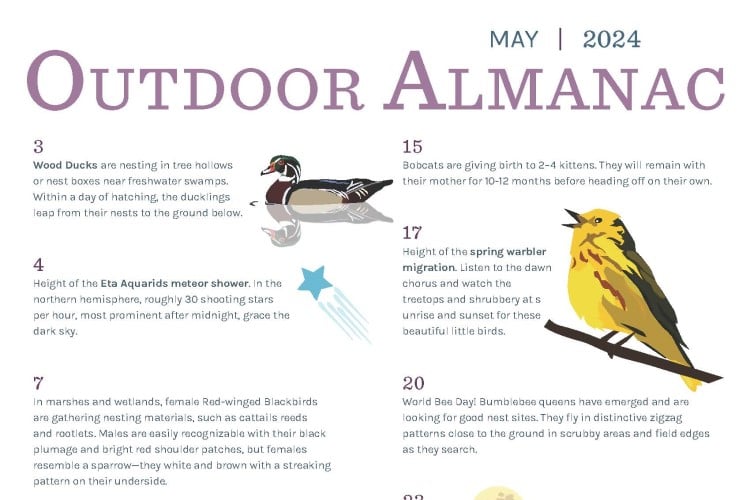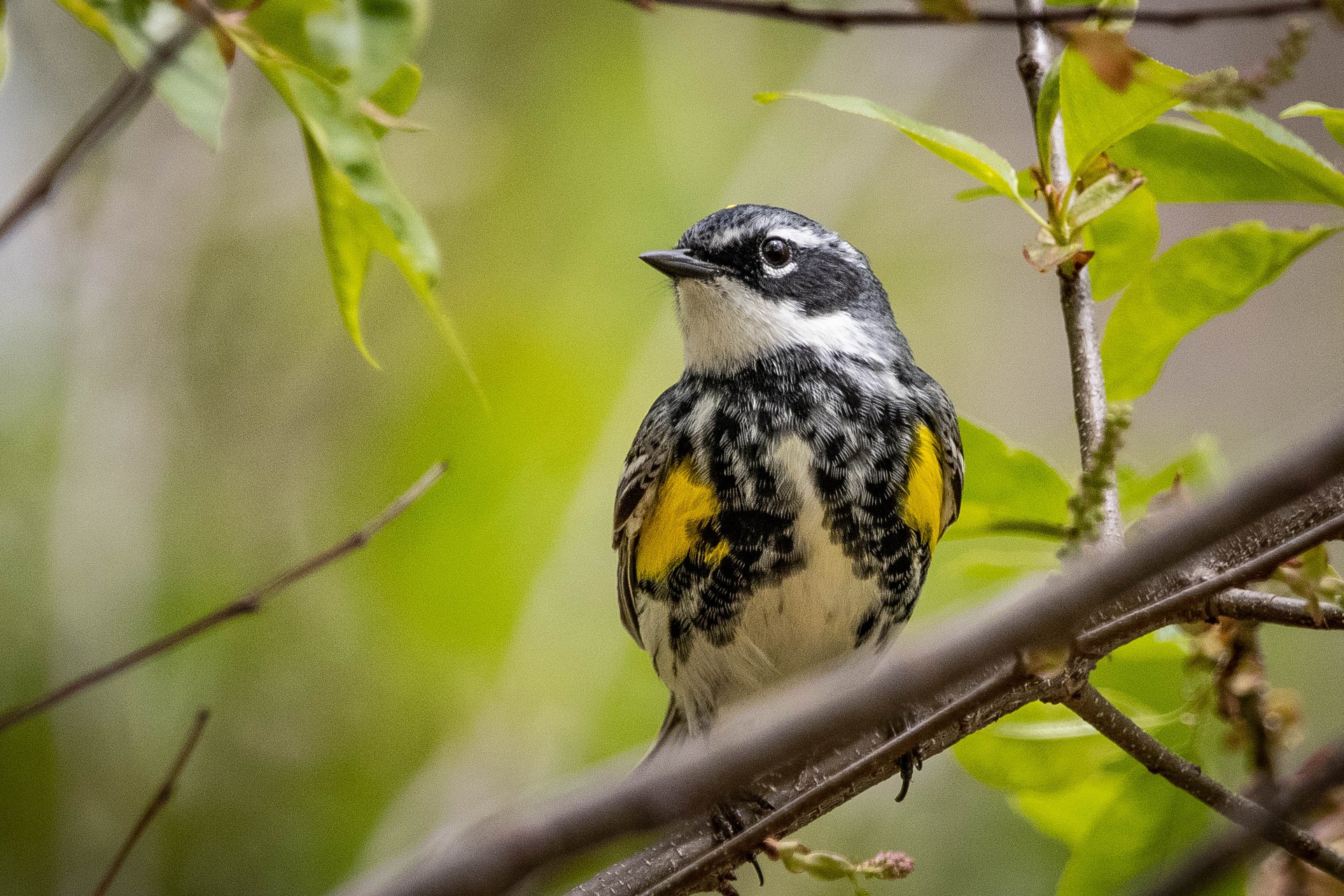Outdoor Almanac
This May, witness busy bird life, blooming buds, and wonderful wildlife. Watch the hustle and bustle of Red-winged Blackbirds preparing their nests while Great Horned Owls co-opt other species' homes. Look for shooting stars during the Eta Aquarids meteor shower and darting bees on World Bee Day. The height of warbler migration will peak, evident by their trill early morning singing. April showers have brought May flowers, as ephemeral blooms abound forests, fields, and wetlands.
What will you discover this May?
Visit a nearby sanctuary or join us for a program to experience the best of May.

Outdoor Almanac
Download or print this month's outdoor almanac.
MAY
3
Wood ducks are nesting in tree hollows or nest boxes near freshwater swamps. Within a day of hatching, the ducklings leap from their nests to the ground below.
4
Height of the Eta Aquarids meteor shower. In the northern hemisphere, roughly 30 shooting stars per hour, most prominent after midnight, grace the dark sky.
7
In marshes and wetlands, female Red-winged Blackbirds are gathering nesting materials, such as cattails reeds and rootlets. Males are easily recognizable with their black plumage and bright red shoulder patches, but females resemble a sparrow—they white and brown with a streaking pattern on their underside.
10
Colorful and uniquely shaped fungi grow in the woods. Look for true morels with their distinct, elongated honeycomb caps.
12
Great Horned Owls are not cavity nesters but use old Red-tailed Hawk or Great Blue Heron nests. Look for the still-downy heads of Great Horned Owl fledglings sticking up over the edges of these large nests.
13
Elusive Eastern Box Turtles are mating. The sex of the hatchlings depends on the temperature inside the nest—eggs that are incubated at 70–80° F are more likely to be male and those at temperatures above 82° F are more likely to be female.
15
Bobcats are giving birth to 2–4 kittens. They will remain with their mother for 10-12 months before heading off on their own.
17
Height of the spring warbler migration. Listen to the dawn chorus and watch the treetops and shrubbery at sunrise and sunset for these beautiful little birds.
20
World Bee Day! Bumblebee queens have emerged and are looking for good nest sites. They fly in distinctive zigzag patterns close to the ground in scrubby areas and field edges as they search.
23
Full Moon.
25
Male and female Common Loons share the incubating responsibilities for their two, green speckled eggs. Successful and safe nest sites are often reused by the loon couple every year.
26
Keep an eye out for female Painted and Snapping turtles crossing roads as they climb uphill to soft, drier soil to dig nests and lay eggs.
27
Enjoy the beautiful white or occasionally pink blooms of our native flowering dogwoods along forest edges or look for one of our most distinctive forest wildflowers, Jack-in-the-pulpit. Keep an eye out for the 1- to 2-foot-tall spathe (pulpit) that grows up and over the flower stalk (Jack).
Upcoming Programs this Month
See MoreYoga at the Sanctuary
-
Wachusett Meadow Wildlife Sanctuary, Princeton
-
Sunday, May 5
10:00-11:00am
Adults
Spring Migration Bird Walk
-
Arcadia Wildlife Sanctuary, Easthampton
-
Monday, May 6
6:30-8:00am
Adults
Nature in Your Neighborhood: All About Birds - Gloucester
-
Eastern Point Wildlife Sanctuary, Gloucester
-
Monday, May 6
8:00-10:00am
Adults
Sensory Friendly Days
-
Drumlin Farm Wildlife Sanctuary, Lincoln
-
Monday, May 6
12:00-3:00pm
Adults & Families - 0 & up
Spring Migration Bird Walk
-
Arcadia Wildlife Sanctuary, Easthampton
-
Tuesday, May 7
6:30-8:00am
Adults
Tuesday Birdwatching Meander
-
Tuesday, May 7
8:00-10:00am
Adults
Stay Connected
Don't miss a beat on all the ways you can get outdoors, celebrate nature, and get involved.



